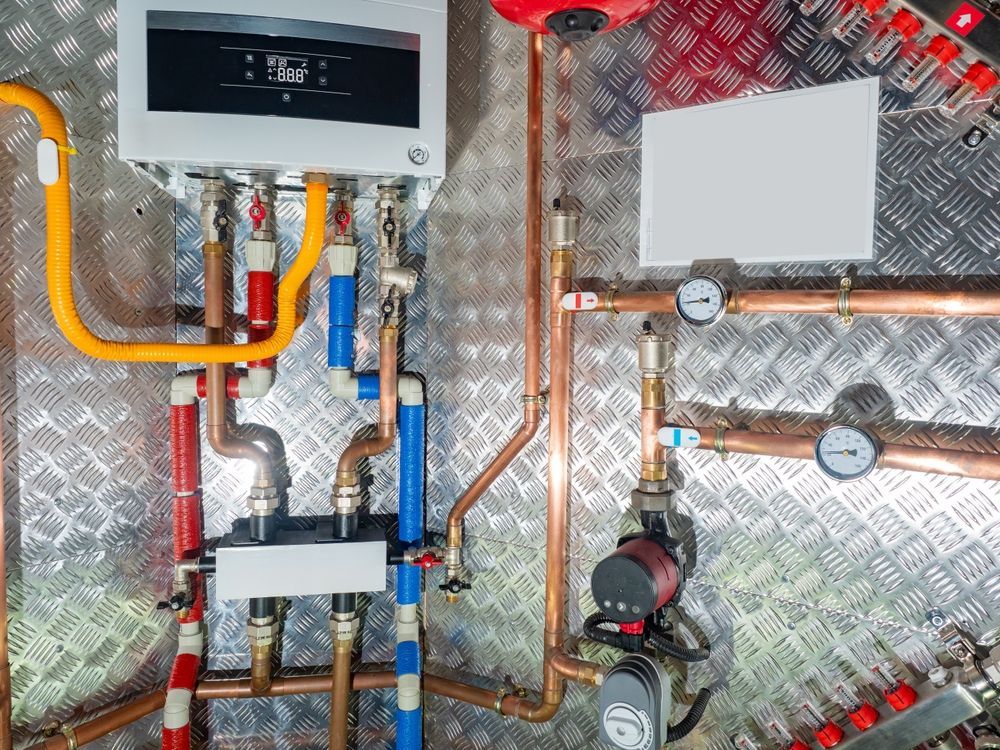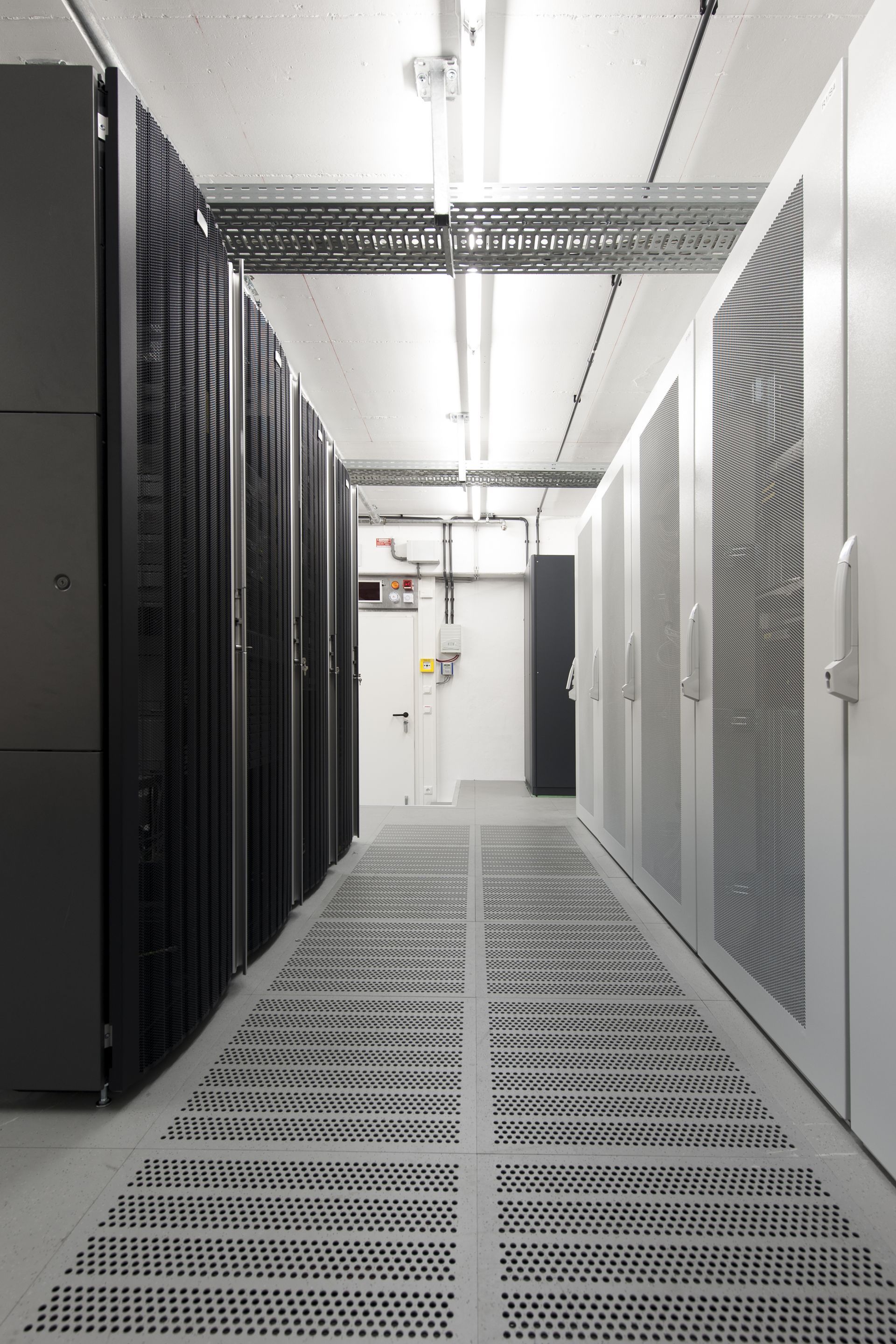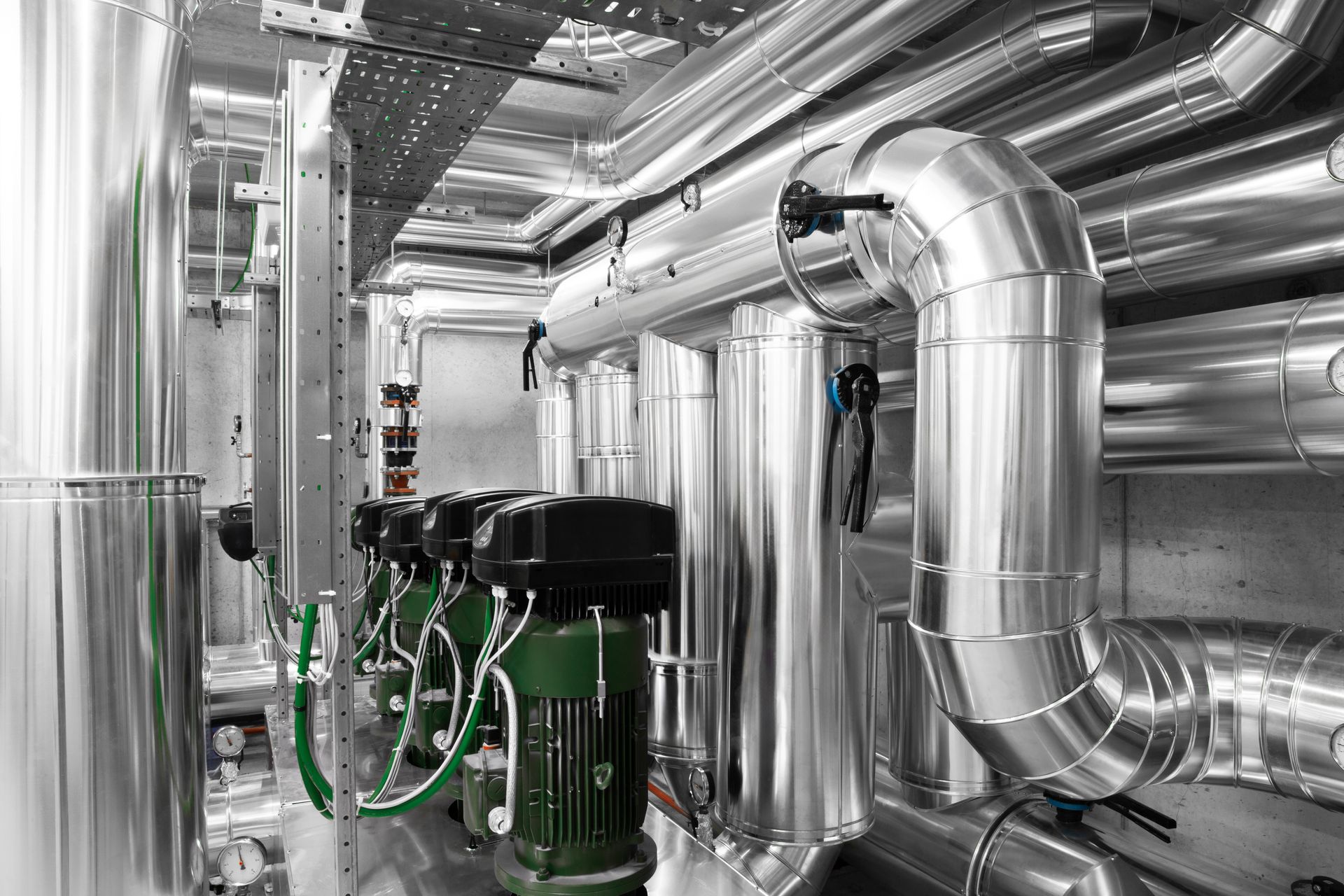What is an HVAC Cooling Tower?
Written by: 1 Source Mechanical
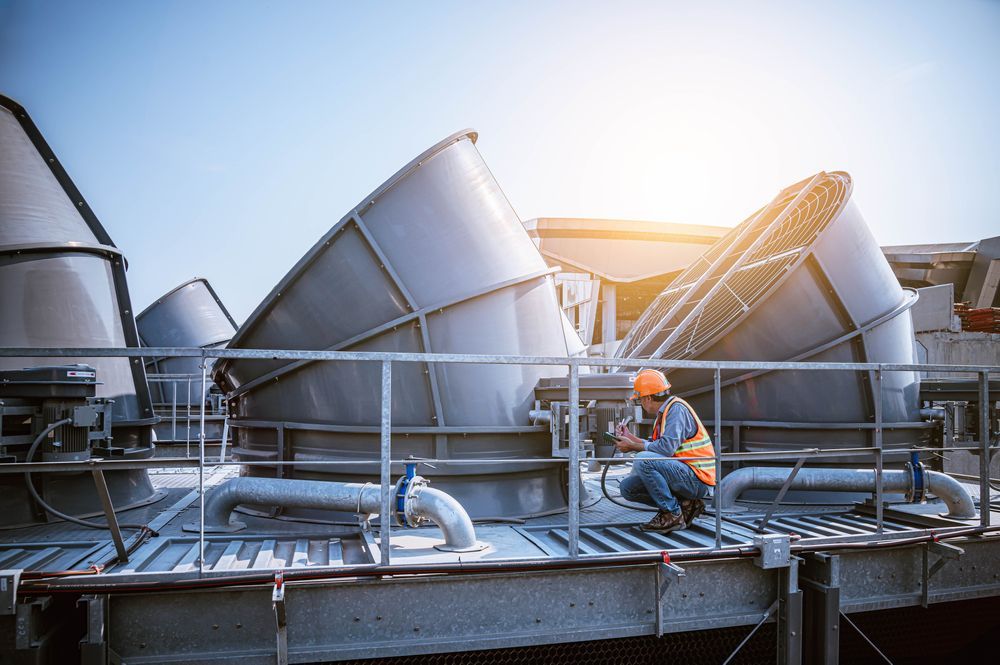
Cooling towers are common sights on the rooftops of commercial buildings. They’re designed to get rid of excess heat from water that circulates throughout the building. This water needs to be kept cool for air conditioning or to control the temperature of any industrial equipment used inside.
An HVAC cooler tower is a heat exchanger. It uses water and air to transfer heat from air conditioning and other internal systems to the outdoor environment. Water and air are brought into contact causing some of the water to evaporate. This lowers the temperature of the water that is circulated through the tower and returned into the building.
The cooling tower is an important part of a commercial HVAC system, and its care is as vital as other tasks such as
maintaining proper ventilation or
balancing an HVAC system.
Types of Cooling Towers
There are a number of ways of classifying cooling towers. For example, there are open and closed towers. Sometimes these are called direct and indirect towers. Open towers expose the water directly to the atmosphere. The warm water is sprayed over a fill to maximize the contact area, and air passes through the fill and removes heat via evaporation. In closed towers, the building’s water does not come into contact with outside air but instead is cooled within tubes. Other water, water that circulates only within the tower, is sprayed over the tubes, and then a fan blows air across them, cooling the water within the tubes.
Towers may also be differentiated by the direction of the airflow, i.e., whether the air flows across or counter to the water. Crossflow cooling towers are those in which the air flows horizontally, across the vertical direction of the falling hot water. In a counterflow system, the air flows upward against the falling water. In cold climates, the fans and motors of crossflow systems may need to be protected to prevent them from icing up.
Towers are also classified by whether the draft is natural or mechanical. In natural draft towers, the heated air is released directly into the atmosphere. These are typically used in power plants and other large industrial sites. With mechanical draft, the air is forced through the structure by a fan. This is more effective than the natural draft arrangement, but it comes at the cost of additional energy consumption.
In addition, there are induced draft and forced draft towers. Induced draft towers have fans on the top that pull air up through the water and fill. With forced draft towers, air is pushed up by blowers and the base on the unit. Induced draft towers are significantly more efficient, and forced draft towers find limited use.
Towers are sometimes classified by whether they are factory assembled (FAP) or field erected (FEP). With FAP, a small tower might come from the factory as one unit, but a larger one will be delivered in several pieces to be assembled on-site.
Components of a Cooling Tower
An HVAC system has major components, and the cooling tower has significant components as well.
- The tower itself. It’s the largest and most visible component. It may be made of wood, concrete, steel, or fiberglass. With proper construction and maintenance, the tower will enjoy a long life cycle.
- The water distribution piping. It carries the hot water to the top of the tower and delivers it throughout the tower’s
distribution system.
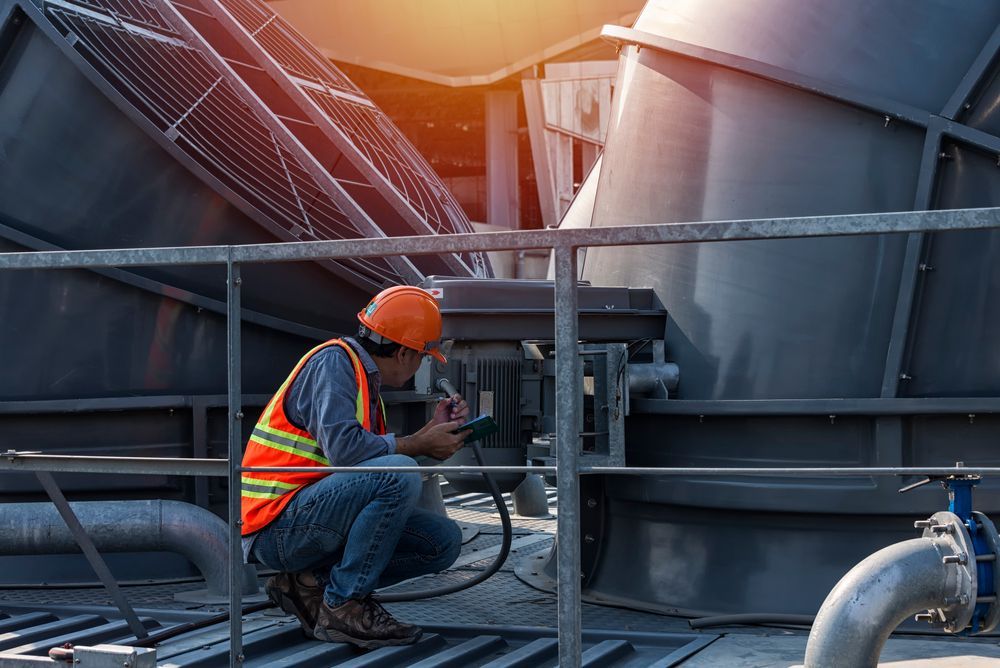
- The heat transfer medium, commonly called the fill. This is the area where water meets air so heat transfer can take place. It often consists of packs of thin corrugated plastic sheets or sometimes as a grid pattern of splash bars. It exists to maintain thermal efficiency and make the heat transfer as effective as possible.
- Drift eliminator. During heat transfer, droplets of water can escape from the cooling tower as carry-over or drift. There’s a risk that these droplets could fall on surfaces where they’re not wanted or even on people. Drift eliminators remove the carry-over droplets.
- Fan deck. The working surface of a tower affords access to the tower mechanicals and the fill for inspection and maintenance.
- Cooling tower fans. These promote the circulation of air where it’s needed in the cooling tower.
- Cold water basin. This is the collection point for the water with heat removed. From there it can be distributed through the building.
What is the Purpose of a Cooling Tower?
An HVAC cooling tower exists to reduce the temperature of the water that circulates throughout a building. Air conditioning equipment and other industrial equipment generate heat, and often this heat is in the form of heated water. This water needs to be cooled so that it can continue to travel through the building and carry away more heat. The cooling tower is a heat exchanger that exposes the hot water to air, evaporating some of the water and bringing down the temperature of the water.
From a broader perspective, the purpose of a cooling tower is to keep a commercial building comfortable and to keep industrial equipment from overheating. This is especially important in power plants, steel mills, chemical processing plants, and manufacturing facilities that operate heavy machinery. However, water towers are also important for airports, shopping malls, schools, hospitals and hotels. No one wants to spend time in a building where air conditioning is needed but doesn’t work properly.
Fortunately, the technology of cooling towers is constantly improving. These innovations afford ever-increasing levels of comfort and safety.
As you can see, there are many decisions to make when choosing a cooling tower. To fulfill its purpose, an HVAC cooling tower must be properly selected, installed, and maintained. It may be out of sight up on the
rooftop, but it should never be out of mind.
1 Source Mechanical is the HVAC installation and maintenance leader in the Chicagoland area. Contact us for expert advice on cooling towers or any other facet of HVAC systems.

